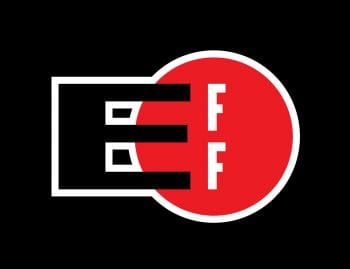The Non-Legacy of the Dancing Baby Case
The dancing baby is now almost a teenager...
 It’s been nearly 11 years since Stephanie Lenz, with the aid of the Electronic Frontier Foundation (EFF), filed her lawsuit against Universal Music.
It’s been nearly 11 years since Stephanie Lenz, with the aid of the Electronic Frontier Foundation (EFF), filed her lawsuit against Universal Music.
The case attracted mainstream media attention, probed at gray areas of copyright law, saw a petition to the Supreme Court and even got the Justice Department involved.
Now, with news that the two sides have reached a settlement, we can finally look at the legacy of the case. Unfortunately, as we’ve discussed before, that legacy isn’t very deep.
For all of the time, effort and money spent on this case, no major victories were won, copyright law was not changed and the practical realities of dealing with false copyright notices were not shifted.
Worst of all, any change that did come from is likely already dated. It is, at most, a minor victory targeted at the internet as it was a decade ago, not as it is today.
Thee Basics of The Case
 In February 2007, Stephanie Lenz uploaded a now-famous 29-second video to YouTube. The video, which featured her 13-month old baby dancing to a barely audible Prince’s Let’s Go Crazy, attracted a Digital Millennium Copyright Act (DMCA) takedown notice from Universal Music in June 2007.
In February 2007, Stephanie Lenz uploaded a now-famous 29-second video to YouTube. The video, which featured her 13-month old baby dancing to a barely audible Prince’s Let’s Go Crazy, attracted a Digital Millennium Copyright Act (DMCA) takedown notice from Universal Music in June 2007.
Lenz filed a counternotice to get the video restored but, with the aid of the EFF, filed a lawsuit against Universal Music saying that the notice was in bad faith.
According to Lenz, the video was clearly a non-infringing fair use and, as such, Universal had violated the law by filing the notice. The DMCA, under Section 512(f), anyone who “knowingly materially misrepresents” when filing a DMCA notice can be held liable for damages. According to Lenz, the video was so clearly a fair use that there was no way it wasn’t a material misrepresentation.
Universal, however, argued that they still did not believe that the video was a fair use and that, while it did not directly consider whether the video was a fair use, it did perform other tests that it claims amounted to a fair use test.
The lower court denied both side’s motion for summary judgment, resulting in both parties appealing to the Ninth Circuit. The court heard oral arguments in July 2015 and, in September 2015, upheld the lower court ruling.
In its decision, the Appeals Court said several things:
- Rightsholders, when filing DMCA notices did need to consider fair use.
- However, that they only need to form a subjective believe that use is not a fair use.
- Automated takedowns were fine so long as the algorithm considered fair use.
While the first point was considered a major victory by many, the second and third points greatly weakened that decision. The use of the subjective standard means a filer only has to believe a use is not a fair use to comply with the law, regardless of whether it is or not, and the court specifically allowed automated takedowns as long as there was some check to consider fair use.
To make matters worse for Lenz, the district court had previously ruled that her damages were likely nominal (meaning very small) and that she may only be entitled to a small percentage of her attorneys’ fees.
In short, even if Lenz were able to prove that Universal did not have a subjective belief, a tall order, she may still have not won any significant damagers or even the entirety of her attorneys’ fees.
Because of that, Lenz appealed to the Supreme Court, which asked the Justice Department for input on the case. The Justice Department advised the court not to take the case, which it declined to do in June 2017.
That sent the case back down to the lower court for a possible trial on Universal’s subjective belief. However, with a probable settlement, that trial seems to be averted.
When a Victory Isn’t a Victory
 In 2015, the EFF and others were quick to paint the Appeals Court decision as a major victory.
In 2015, the EFF and others were quick to paint the Appeals Court decision as a major victory.
But, while getting the court to rule that DMCA filers must weigh fair use is a major step, it was almost completely neutered by the rest of the ruling.
From a practical standpoint, proving that someone doesn’t have a subjective belief that a work is infringing is nearly impossible. Unless they do something stupid, such as admiting it publicly (as with the Super Seducer case) it’s going to be tough. This is especially true with something as uncertain as fair use.
From the EFF’s perspective, the goal of the lawsuit was to give Section 512(f) more teeth, something it had lacked for some time. Unfortunately for them, between the subjective faith, the nominal damages and uncertain attorneys’ fees, the Lenz case did nothing to make lawsuits over false DMCA notices easier, more likely to win or more practical.
These lawsuits are exceedingly rare, even when the facts are clear and the Lenz case did nothing to make them more practical. If you are hit with a bad DMCA notice in 2018, you are almost exactly as hopeless fighting it in 2018 as you were in 2007.
The worst part is that the internet, including YouTube, has already moved on from the challenges of Lenz, creating a very different copyright environment on the site, and much of the rest of the internet.
A New, Automated World
In October 2007, three months after the Lenz lawsuit was filed, YouTube launched Content ID. By July 2016, the system was handling more than 99 percent of the copyright claims related to music.
Content ID isn’t part of the DMCA. Section 512(f) doesn’t apply. There’s no way to sue over a bad Content ID match and your only recourse is within YouTube itself. It’s created a completely separate copyright system, one where the Lenz case has no bearing.
Facebook has a similar system that it’s extended to Instagram and other large sites have implemented automated solutions of their own.
Now, with news that the European Parliament is preparing to vote on a new Copyright Directive that would make such filtering mandatory, it may become even more prevalent.
But even without that directive, the trend has been very clear: Increased automation in copyright enforcement by providers. While rightsholders will continue to automate the sending DMCA notices when necessary, large providers are internalizing and taking control of this process themselves.
In short, even before Lenz had her first day in court, the case was already out of date as it related to YouTube. Lenz and the EFF were fighting a battle to protect an increasingly outdated version of the internet and now, eleven years later, the facts that led to this lawsuit would likely never happen on YouTube and it’s becoming increasingly less likely on other sites.
The YouTube and the internet that gave rise to this case simply doesn’t exist anymore. If it does, it likely won’t exist for much longer.
Bottom Line
The Lenz case points to the difficulties of trying to both litigate and legislate issues of copyright online. By the time a bill is passed or a decision is reached, it’s probably that whatever made it necessary will have either changed or be gone.
Technology is outpacing the law.
The Thomas-Rasset case, for example, dealt with file sharing on Kazaa. By the time it was resolved in 2013, Kazaa had been closed for over 10 years and even BitTorrent, the successor and former file sharing behemeoth, had already fallen out favor as well.
Much is the same for Lenz. The rulings in the case didn’t change anything significantly but, anything it did change either doesn’t exist or isn’t as prevalent in 2018. Even Google search is seeing a significant drop in DMCA notices.
The internet is changing. However, it’s not changing because of the Lenz ruling, it’s changing around it.
It’s a case that changed very little to start with but, now that’s its ending, it’s exiting into a much different internet than it started. Any relevance it might have had is likely already lost.
Want to Reuse or Republish this Content?
If you want to feature this article in your site, classroom or elsewhere, just let us know! We usually grant permission within 24 hours.
